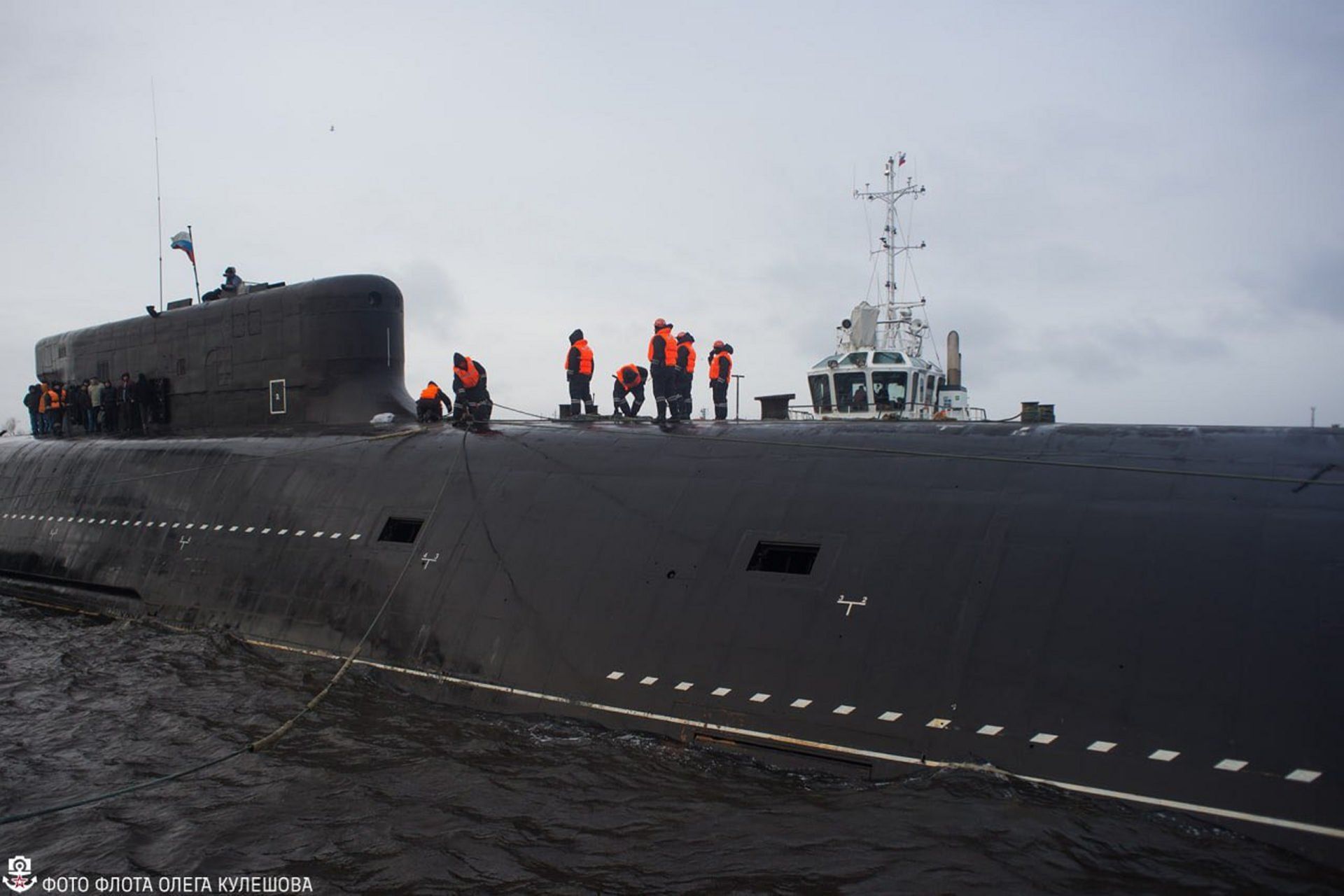Breaking News
Nuclear submarine Knyaz Pozharsky begins sea trials in White Sea.
According to information published by Sputnik on July 29, 2024, the Borei-class nuclear-powered ballistic missile submarine Knyaz Pozharsky has commenced sea trials in the White Sea.
Follow Army Recognition on Google News at this link

Russian Project 955A submarine Imperator Alekasnadr II during sea trials. (Picture source: Oleg Kuleshov)
Named after the Russian prince Dmitry Pozharsky, it began construction in December 2016 at the Sevmash shipyard in Severodvinsk and was officially launched on February 3, 2024.
The Knyaz Pozharsky is part of the Project 955A (Borei-A) series, which is an advanced variant of the original Borei-class. The submarine is equipped with 16 RSM-56 Bulava submarine-launched ballistic missiles (SLBMs) and six 533mm torpedo tubes. It features a pump-jet propulsion system, which enhances its stealth capabilities compared to traditional propeller-driven submarines.
This submarine is 170 meters long, has a beam of 13.5 meters, and a draft of 10 meters. It displaces 14,720 tons when surfaced and 24,000 tons when submerged. The propulsion system includes an OK-650B nuclear reactor and a steam turbine, allowing the submarine to reach speeds of up to 30 knots underwater.
The Knyaz Pozharsky will undergo extensive sea trials in the White Sea, testing its navigation, diving, propulsion, and weapon systems before being commissioned into the Northern Fleet. This fleet's ballistic missile submarines conduct nuclear deterrent patrols in the Barents Sea and under the Arctic ice cap.
About the Northern Fleet
Based in Severomorsk on the Kola Peninsula, the fleet benefits from direct access to the Arctic Ocean and the Barents Sea, allowing it to project power and maintain a significant military presence in the Arctic. This geographic advantage is crucial as melting ice opens new maritime routes and access to valuable natural resources.
The fleet is equipped with advanced submarines, including Borei-class vessels carrying ballistic missiles, which form a key part of Russia's nuclear triad. This ensures a robust second-strike capability, essential for maintaining strategic deterrence.
Additionally, the Northern Fleet has undergone extensive modernization, including the refurbishment of air and naval bases, and the deployment of advanced radar and missile systems such as the hypersonic Kinzhal missile.
Moreover, the Northern Fleet plays a vital role in safeguarding the Northern Sea Route, a potential major trade route between Asia and Europe, which is becoming increasingly accessible due to Arctic ice melt. Protecting this route, along with the region's hydrocarbon and mineral resources, is essential for Russia's economic interests.


























